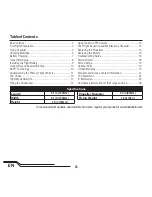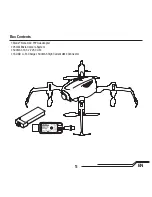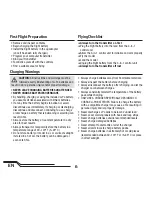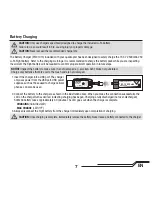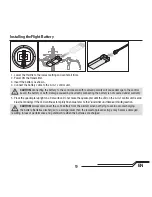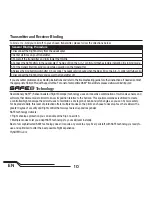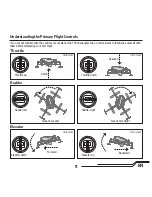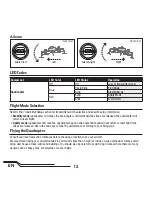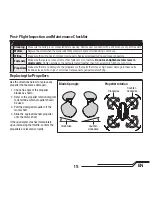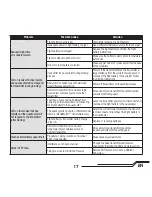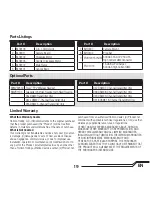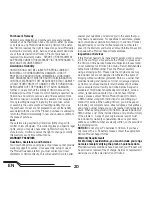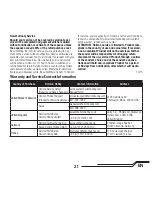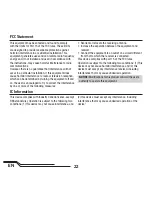
13
EN
Takeoff
Increase the throttle until the model is approximately 2 ft. (600mm) off the ground in a low-level hover and concentrate
on balancing the throttle stick’s position so that the quadcopter holds a steady hover altitude. In some cases, you may
need to make a few short “hops” to an altitude of just a few inches until you become familiar with the control inputs and
trim settings required to maintain a steady hover and altitude.
Hovering
The Nano QX2 FPV quadcopter requires minor throttle adjustments to maintain its altitude in hover. Remember to keep these
throttle adjustments as minimal as possible. Large adjustments could result in a loss of control and/or a possible crash.
While attempting to establish a low-level hover, check to see if any trim adjustments are required to help keep the
quadcopter from constantly drifting in various directions. If you fi nd that it constantly drifts without any directional control
input, land the model before making any adjustments to the trim settings.
• If the nose of the quadcopter rotates to the left or right, adjust the rudder trim.
• If the quadcopter continually drifts forward or backward, adjust the elevator trim.
• If the quadcopter continually drifts to the left or right, adjust the aileron trim.
Continue making minor trim adjustments until the machine hovers at a low altitude with very little drifting and directional
control input. If this is your fi rst multicopter or helicopter, seek the help of an experienced pilot to trim the model for you
before making your fi rst fl ight.
With your quadcopter properly trimmed and maintaining a stable low-level hover, practice using the rudder, elevator and
aileron controls to familiarize yourself with the machine’s responses to control inputs. Remember to keep the control
inputs as minimal as possible.
NOTICE:
Crash damage is not covered under warranty.
Low Voltage Cutoff (LVC)
Once the battery reaches 3V under load, the ESC will continuously lower power supplied to the motor until complete
shutdown occurs. This helps prevent over-discharge of the Li-Po battery. Land immediately once the ESC activates LVC.
Continuing to fl y after LVC can damage the battery, cause a crash, or both. Crash damage and batteries damaged due to
over-discharge are not covered under warranty.
NOTICE:
Repeated fl ying to LVC will damage the battery.
Flight time with a fully charged battery is approximately 3-5 minutes, depending on how aggressively the quadcopter is fl own.
LVC does not prevent the battery from over-discharge during storage.
Landing
To land, slowly decrease the throttle while in a low-level hover. After landing, lower the throttle completely to stop the
motors. Disconnect and remove the battery from the quadcopter to prevent over discharge. During storage, make sure the
battery charge does not fall below 3V per cell.
Summary of Contents for Nano QX2 FPV
Page 1: ......




